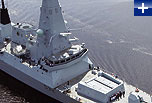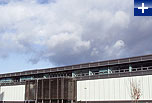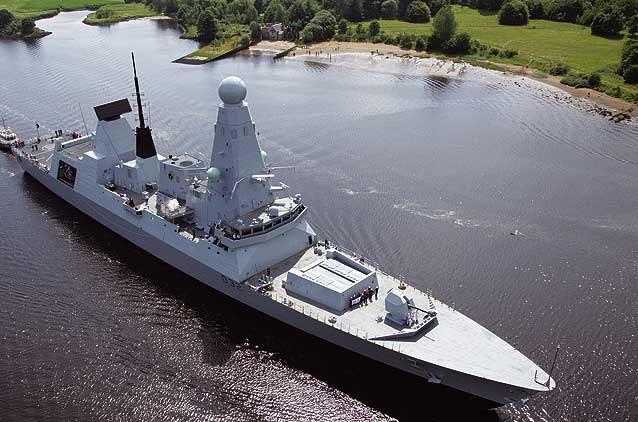Engineering and Technology
- Global research network expanded
- Further research work in US secured
- Europrop International TP400 flew for the first time
- WR-21, the world’s most efficient marine gas turbine, entered service
- Trent 60WLE dual fuel started service operation
| Key performance indicators | 2008 | 2007 | 2006 | 2005 | 2004 |
| Gross research and development expenditure £m |
885 | 824 | 747 | 663 | 601 |
| Net research and development expenditure £m |
490 | 454 | 395 | 339 | 282 |
| Net research and development charge £m |
403 | 381 | 370 | 282 | 288 |
| Net research and development expenditure % of underlying revenue |
5.4 | 5.8 | 5.4 | 5.2 | 4.7 |
The Group’s engineering and technology activity includes our research and technology, product development and product upgrade operations across our four customer-facing businesses.
We have 9,600 people in our worldwide engineering network, with major centres in the UK, USA, Canada, Germany, Scandinavia, India and Singapore. In addition, the Group leverages resources through its global network of 29 University Technology Centres (UTC) in seven countries, which develop and acquire technologies for tomorrow’s Rolls-Royce products. This network further expanded in 2008 with the opening of a UTC in Pusan, Korea, to develop high efficiency heat exchangers.
In 2008, we have continued to invest in a broad range of technology development and demonstration programmes. Research and development expenditure was £885 million, of which £490 million was funded from Group resources. The net charge to the income statement was £403 million. A significant proportion of this technology provides the foundation for products with reduced environmental impact while delivering increased value to our customers.
Building on our past research successes we filed 425 patent applications in 2008, a record year for the Group.
We have made good progress on two US Air Force premier technology programmes, ADVENT and HEETE, and won a further award for the Integrated Vehicle Energy Technology (INVENT) programme .
In Europe, we successfully ran the Power Optimised Aircraft (POA) engine demonstrator, integrating electrically driven engine components which traditionally are powered mechanically. We also achieved encouraging noise level results from a rig test demonstrating the open rotor aero engine, which has the potential to deliver a step reduction in fuel consumption.
We continued, with partners, to develop two low-carbon energy technologies. The construction of the 500kW underwater tidal power turbine prototype has started and we also began system testing our solid oxide fuel cells. However, we have taken the decision to focus future fuel cells activity on the development of the technology rather than production and manufacturing verification in order to match product readiness with market demand.
Our focus on modern manufacturing continues with the opening of the Factory of the Future, the latest development of the Advanced Manufacturing Research Centre in Sheffield, UK. We are also making good progress on the Advanced Forming Research Centre in Glasgow, UK, and three other manufacturing research centres globally.
In defence aerospace, the Rolls-Royce LiftFan flew on the Joint Strike Fighter in conventional mode, ahead of full system testing in 2009. The TP400, developed by the Europrop International consortium, for the A400M military transport aircraft, flew for the first time on the flying testbed.
In civil aerospace, the Trent 900 demonstrated excellent reliability during its first full year in service with Singapore Airlines and is also in operation with Qantas. The Trent 1000 continues to build its maturity on the test bench, awaiting first flight of the Boeing 787. The first BR725 for the Gulfstream G650 ran on time and the engine is making good progress towards certification. The Trent XWB for the Airbus A350 XWB has now largely completed its preliminary design stage.
Our drive for improved in-service engine reliability continues, with engine health monitoring data and analysis techniques delivering globally competitive and improving levels of fleet reliability.
HMS Daring, the first of the WR-21 powered Royal Navy Type 45 destroyers, was handed over to the Royal Navy in 2008. The engine, with its intercooled and recuperated cycle, is the world’s most efficient marine gas turbine.
The Littoral Combat Ship USS Freedom, was commissioned for US Navy service, demonstrating successful integration of two MT30s, the most powerful marine gas turbine in the world, derived from the Trent 800 aero engine. The MT30s together with four Rolls-Royce Kamewa 153 S11 waterjets drive this 3,000 tonne ship at speeds in excess of 40 knots.
The long life nuclear core was successfully installed in the first Astute class submarine for the Royal Navy. With this reactor core the submarine can operate for its whole lifespan without refuelling.





